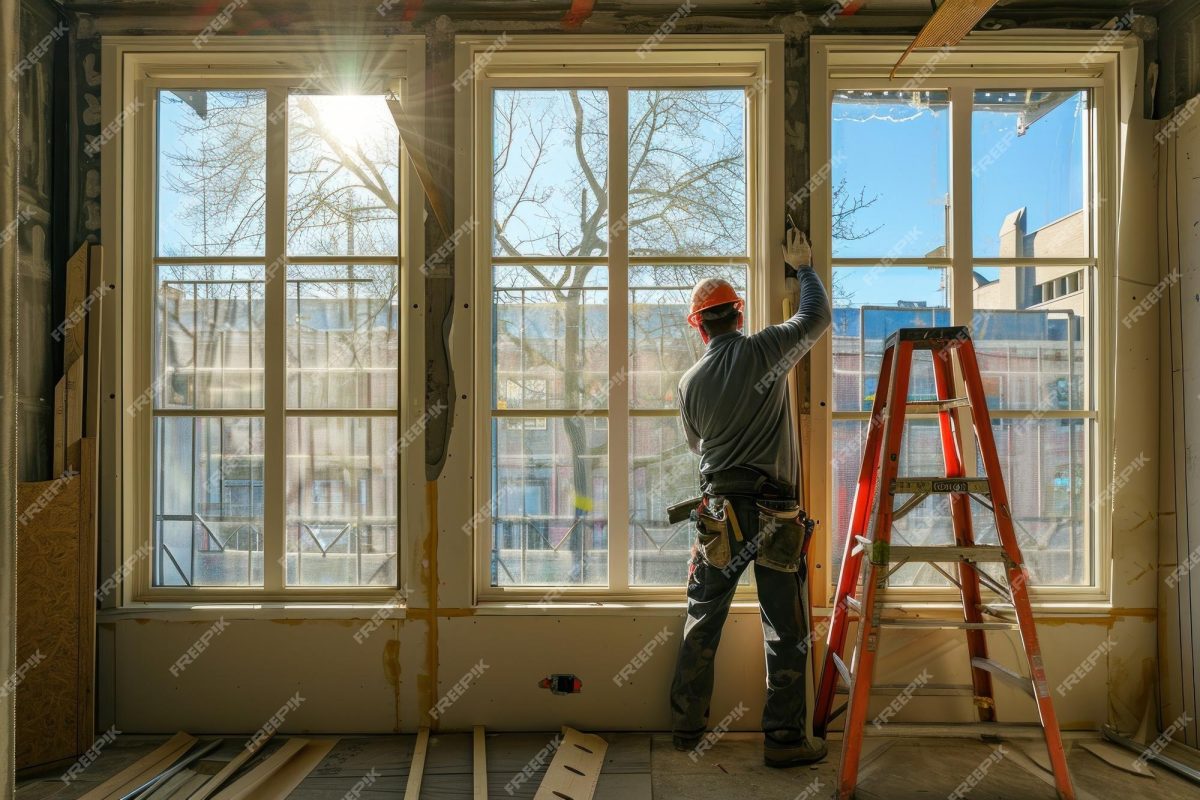Why Windows/Contructions Matter: Expert Tips for Modern Design
In modern architecture and design, the integration of windows/constructions plays a pivotal role in shaping both the aesthetic appeal and functional performance of a building. The strategic choice of windows and the implementation of construction techniques significantly impact not only the visual aspects but also the energy efficiency, comfort, and overall value of a structure. Understanding these elements is crucial for achieving a harmonious and effective design.
The Aesthetic Impact of Windows
Windows are more than mere openings in a wall; they are integral to the visual character of a building. They influence the architectural style, contribute to the building’s interaction with its surroundings, and define the overall ambiance. For instance, large, floor-to-ceiling windows can enhance a modern design by creating a seamless connection between indoor and outdoor spaces, flooding interiors with natural light and providing unobstructed views. Conversely, the use of geometric or patterned windows can introduce a unique design element, contributing to the building’s distinctive character.
Energy Efficiency and Environmental Considerations
In addition to their aesthetic role, windows are crucial for a building’s energy performance. Modern windows/constructions are designed with advanced materials and technologies that enhance insulation and reduce heat transfer. Double or triple glazing, low-emissivity coatings, and argon gas fills are some of the innovations that improve thermal performance and minimize energy loss. Properly designed windows can significantly reduce heating and cooling costs, contributing to both environmental sustainability and cost savings.
Optimizing Natural Light and Ventilation
Effective window placement is essential for optimizing natural light and ventilation within a space. Strategic positioning of windows can enhance the indoor environment by maximizing daylight exposure, which not only improves the mood and well-being of occupants but also reduces reliance on artificial lighting. Moreover, well-placed windows facilitate natural ventilation, promoting better air quality and reducing the need for mechanical cooling systems. This integration of natural elements into the design not only contributes to energy efficiency but also enhances the overall comfort of the living environment.
Enhancing Privacy and Security
While windows are a gateway to the outside world, their design must also address privacy and security concerns. In residential settings, privacy can be maintained through the use of frosted glass, blinds, or strategic placement of windows to avoid direct sightlines from neighboring properties. Security features such as reinforced glass, secure locking mechanisms, and window sensors can further safeguard against potential intrusions, ensuring that the design does not compromise safety.
Innovative Construction Techniques
The field of construction has seen significant advancements in recent years, with innovative techniques improving both the functionality and aesthetics of modern buildings. Techniques such as curtain wall systems, which involve large panes of glass suspended from a building’s structural frame, allow for expansive views and uninterrupted facades. Additionally, modular construction methods enable precise and efficient assembly of window units, reducing construction time and minimizing on-site labor.
Sustainable Materials and Practices
Sustainability is a critical consideration in contemporary windows/constructions. The use of eco-friendly materials and practices contributes to the overall environmental impact of a building. Recycled glass, sustainable wood frames, and low-impact manufacturing processes are examples of how modern construction can align with green building principles. By choosing sustainable options, architects and builders can reduce the ecological footprint of their projects while enhancing the building’s energy efficiency and longevity.
Balancing Functionality and Design
Ultimately, the challenge in modern design is to balance functionality with aesthetic appeal. Windows must not only fulfill practical requirements, such as energy efficiency, ventilation, and security, but also contribute to the building’s visual appeal. Architectural features like operable windows, custom shapes, and unique glazing options allow for creative expression while meeting performance criteria. This balance ensures that the building is both visually striking and functionally superior, reflecting a thoughtful and well-integrated design approach.
In Conclusion, The significance of windows/constructions in modern design cannot be overstated. From enhancing aesthetic appeal to improving energy efficiency and addressing privacy concerns, windows are a fundamental component that influences various aspects of building performance and design. By understanding and implementing advanced technologies and innovative techniques, architects and designers can create spaces that are not only beautiful but also functional and sustainable. This comprehensive approach ensures that modern buildings meet the highest standards of design and performance, contributing to a more comfortable and aesthetically pleasing environment.

